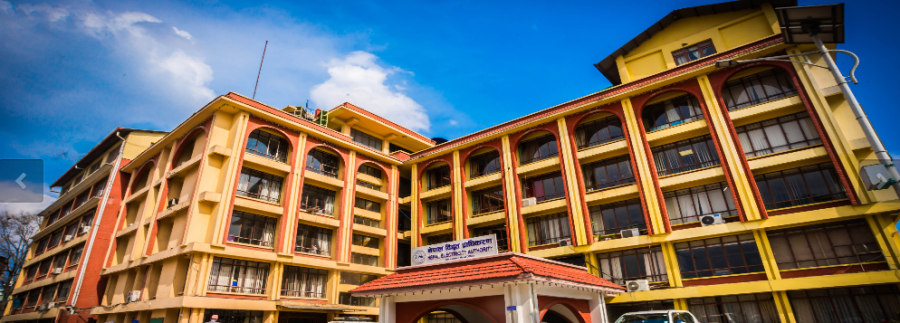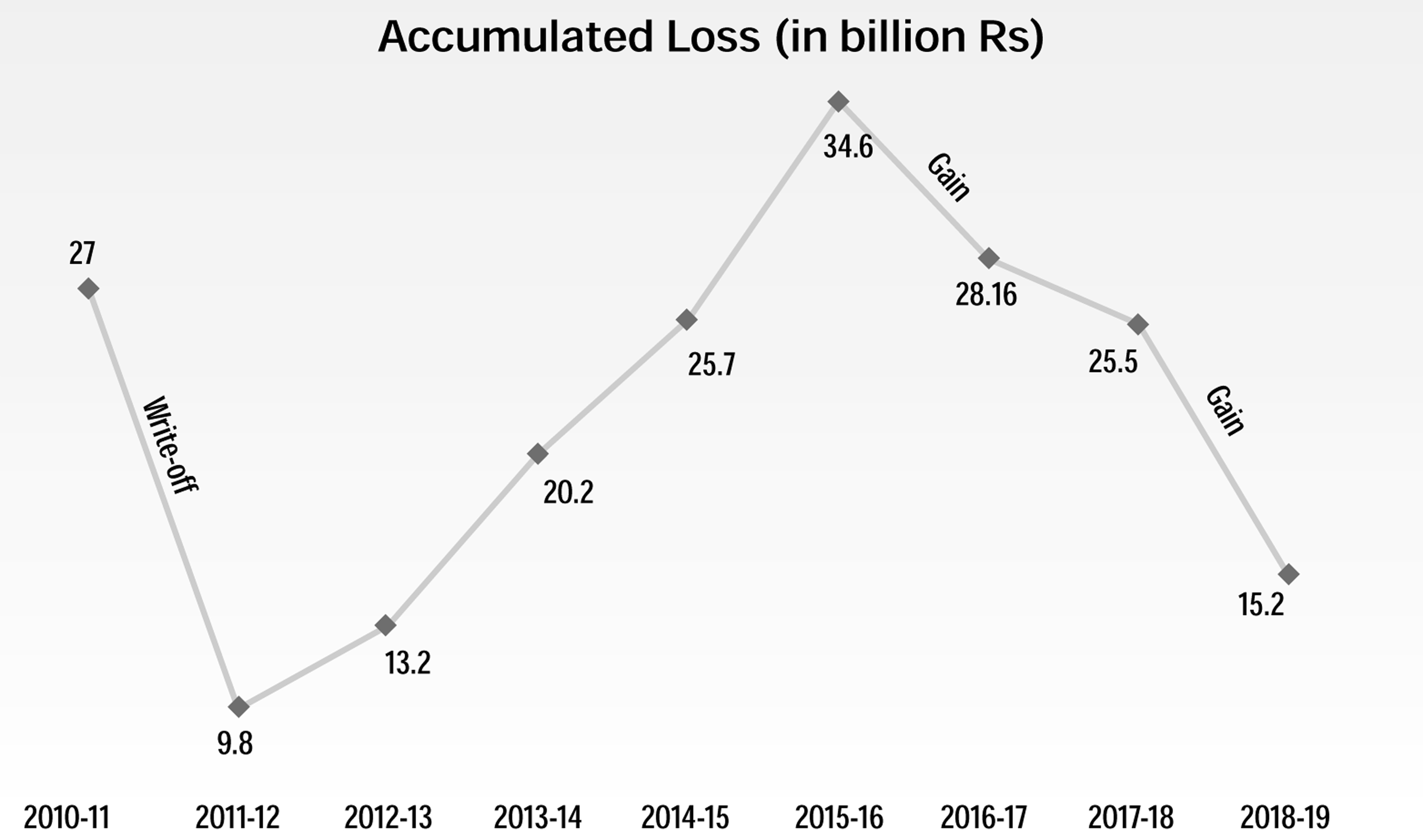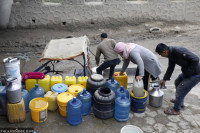Money
The Nepal Electricity Authority stages a dramatic turnaround
The state-owned utility has not only ended load-shedding, it is actually making a profit.
Prahlad Rijal
Nearly a decade ago, the Nepal Electricity Authority faced severe financial strain and was on the brink of unsustainability caused by high overheads, generation losses, massive debt accumulation and administrative malpractices.
At the same time, the country was reeling under a severe power crisis as the shortage of power was around 500 MW a day in the dry season, and outages lasted up to 16 hours even in the Capital.
With increasing imports adding an extra cash burden, the utility was also not able to generate sufficient money from business operations which was imperative to repay its local and foreign debts and fund new projects.
Mired in the situation, the power utility, with the recommendation of a ministerial committee, was able to convince the government to let it undergo financial restructuring and the state wrote off Rs27 billion in accumulated losses.
Following the restructuring in the fiscal year 2010-11 , the interest rate on loans obtained by the power utility from the government was brought down to a flat rate of 5 percent from an average rate of 8 percent. That helped the utility save a few million in interest expenses.
But the situation remained bleak as the utility suffered an operational loss of Rs9.8 billion, just a year after the financial restructuring.
And the total power generation of the country was as low as 689 MW with independent projects generating around 178 MW and the electricity authority churning out only 531 MW.
Also, the utility was troubled by administrative mismanagement and officials working to serve their vested interests rather than improve organisational strength and capacity.
On the other hand, electricity tariffs had remained unchanged for a decade, and the power purchase rates had exceeded the selling rate throwing the Nepal Electricity Authority in reverse gear.
It was only in the fiscal year 2012-13 that the tariff was hiked by 20 percent. However, the utility still incurred losses of Rs3.4 billion because of increasing electricity imports, stagnant generation and slack expansion of electricity consumers and heavy system loss of electricity. By the end of 2012-13, the Nepal Electricity Authority had already accumulated Rs13.2 billion in losses again.
In the fiscal year 2015-16, the country’s total peak demand stood at 1,385 MW, but the power utility was producing only 531 MW. The country’s total generation of power grew to 856 MW as independent power projects increased by 78 percent in five years and started relaying 324 MW to the grid by the end of 2015-16.
But that also meant the power utility had to pay more to purchase power from independent projects while also shelling out millions for electricity imports which had grown to 313 MW in 2015-16.
The system loss caused by poor distribution infrastructure, leakages and theft in 2015-16 stood at 25.78 percent, causing losses amounting to millions of rupees. And, the power utility incurred a loss of Rs8.89 billion in a single year in 2015-16.
Starting 2017, the Nepal Electricity Authority began scripting a turnaround with bold announcements from the newly appointed Managing Director Kulman Ghising that the utility would make power outages a thing of the past.
In the fiscal year 2016-17, the power utility ended outages by importing electricity from India and changing its approach to peak load demand management. “End to power outages was the result of improved demand side management, stringent checks against theft of electricity and changing the operational approach,” said Ghising.
And in 2016-17, the power utility went under a second restructuring and saw a second series of loan rates adjustment relieving it of some cash burden. Also, the now dissolved Electricity Tariff Fixation Commission hiked electricity tariffs and local levels paid the utility around Rs16 billion in outstanding dues for street lights. And for the first time in over a decade, the utility saw a net profit of Rs1.46 billion in 2016-17.

According to the Nepal Electricity Authority, the remarkable strides over the past three years was backed by continuous supply of electricity starting in May 2018, cuts in system losses and administrative efficiency.
In the last fiscal year, the electricity authority witnessed a net profit of Rs7.20 billion after cost adjustments, a massive 148.69 percent increase when compared to a net profit of Rs2.8 billion in 2017-18.
Also, over the past two years, the electricity authority has been able to revive 38 generation, transmission and distribution projects including the 30 MW Chameliya hydel scheme, 60 MW Trishuli 3A hydropower project, Kabeli corridor transmission line and other substation projects.
The expansion of substations which ensured system loss reduction has also born fruit as 30 new substations were added in the last fiscal year.
And the rate of electrification, which was just 38 percent a decade ago and around 50 percent in 2015-16, now stands at 78 percent backed by an increased consumer base which has reached 4.5 million consumers.
Nonetheless, the country is yet to become self-reliant in electricity during the dry season when most run-of-the-river schemes operate at less than 50 percent of their installed capacity.
To balance the demand-supply situation, the Nepal Electricity Authority has imported 653 MW over the fiscal year 2018-19 which has cost the country over Rs22 billion in import bills. The bills would have been much higher if the utility had not adopted a strategic approach while importing power.
The power utility expects to cut electricity imports by the end of this fiscal year by bringing the much-hyped 456 MW Upper Tamakoshi Hydropower Project into operation.
Instances of poor infrastructure leading to intermittent supply, increasing rate of electrocution, and rising instances of administrative malpractice still remain a challenge to the power utility.
Energy Minister Barsha Man Pun has directed staffers at the Nepal Electricity Authority to adopt a consumer friendly approach and put an end to grievances such as slack service delivery, extra fees for installing electricity meters and changing transformers.
"The consumers must get electricity at reasonable rates by bringing down generation, distribution and transmission costs and by controlling administrative expenses," said the minister. "Earlier, the utility had faced challenges to provide regular electricity, but now the focus must be on reliable and quality supply of power."
Officials say the utility needs to invest in state-of-the-art infrastructure to ensure a robust distribution system and bring down system losses, and build high capacity storage projects to meet demand through domestic production in the dry season.




 7.12°C Kathmandu
7.12°C Kathmandu















